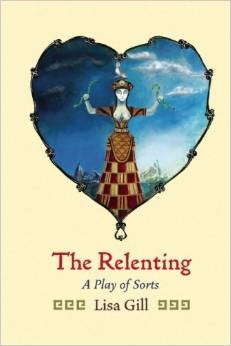The Relenting
 Not every writer could make a face-down with a rattlesnake in her Moriarty living room “a primal encounter waiting to be interpreted,” yet that’s precisely what Albuquerque poet Lisa Gill has done. Her introduction to the play, “The Catalyst & the Evolution,” contains one of the best descriptions of the writing process I’ve read: “Ecdysis is the word for the skin sloughing snakes do and might as well be the word for the process writers go through with revisions of certain manuscripts, those texts whose life cycles demand we shed draft after draft, abandoning each accrued preconception to ultimately access deeper instinct.”
Not every writer could make a face-down with a rattlesnake in her Moriarty living room “a primal encounter waiting to be interpreted,” yet that’s precisely what Albuquerque poet Lisa Gill has done. Her introduction to the play, “The Catalyst & the Evolution,” contains one of the best descriptions of the writing process I’ve read: “Ecdysis is the word for the skin sloughing snakes do and might as well be the word for the process writers go through with revisions of certain manuscripts, those texts whose life cycles demand we shed draft after draft, abandoning each accrued preconception to ultimately access deeper instinct.”
Not every writer could make a face-down with a rattlesnake in her Moriarty living room “a primal encounter waiting to be interpreted,” yet that’s precisely what Albuquerque poet Lisa Gill has done. Her introduction to the play, “The Catalyst & the Evolution,” contains one of the best descriptions of the writing process I’ve read: “Ecdysis is the word for the skin sloughing snakes do and might as well be the word for the process writers go through with revisions of certain manuscripts, those texts whose life cycles demand we shed draft after draft, abandoning each accrued preconception to ultimately access deeper instinct.”
For Gill, the iconic image was that of the Minoan Snake Goddess, a sculpture found in the temple repositories in the palace at Knossos, Crete. She envisioned herself holding aloft “the real and the metaphorical snake” with equal authority, compassion, and grace. She achieved this brilliantly on the page.
But the form of “The Relenting” itself tussles with a series of obstacles that, like Odysseus, it must surmount. The play’s two principal characters are Woman and Snake. The Woman has a “poetic disposition and a gift for both seriousness and humor . . . She is able-bodied but recently out of a wheelchair so at least conscious of physical vulnerability.” Gill, a National Endowment for the Arts fellowship and author of three previous volumes of poetry – Red as a Lotus, Mortar & Pestle, and Dark Enough – was diagnosed with multiple sclerosis. Since The Woman serves as the author’s alter ego, the play could’ve resulted in a reiteration of the tropes of the “recovery narrative.”
Also, Gill’s tendency to reimagine the encounter in archetypal terms and create personified characters could’ve ended in a work as bloodless as bad allegory or a Jungian treatise. Nonetheless, The Relenting is none of those.
Lisa Gill is a poet of profligate and protean gifts whose work is marked by both an exuberant freedom and formal rigor. She draws deep upon a wellspring of linguistic resources: multiple languages, including Spanish, Greek and siSwati, myth, the Bible, literary allusion and playfulness (“Infrared wheelbarrow”), high and low diction, neuroscience and anatomy. In her self-introduction, Woman addresses the Snake, recognizing that at the moment they’re not sharing the same topography:
Not the rash of wildsprung asters
under the windmill;
Not the chasms of 4 o’clock blossoms
near the piñon;
Not the broken clothesline still noosed
In a high branch of the juniper;
Nor the sun-mashed berry-pulp beneath.
In an essay about Hemingway, Alfred Kazin wrote of “the Western American’s . . . adoration and awe” of the natural world. Kazin could’ve just as well have been writing about Gill’s poetry. Note the adjectives “wildsprung” and “sun-mashed,” their sheer activeness and juice. In fact The Relenting is about language itself – its disempowering and restorative aspects, the incantatory power of The Word. As Adrienne Rich has said, there are those who have had language used against them.
Later, the Woman sees in the snake-shape an analogue to the cosmic:
as if what your spine can do was as vast and encompassing
as the circles in the heaven, 10,000 ellipses,
all the spheres of the heavens rotating at once.
The play demonstrates the author’s remarkable empathy for otherness, the not-human, the reviled, the potently venomous, and is timely as exurban sprawl and violence against women. “The Relenting” is a stunning, often funny work of desire, risk, bodily and ecological violation, transformation and spiritual invocation.





